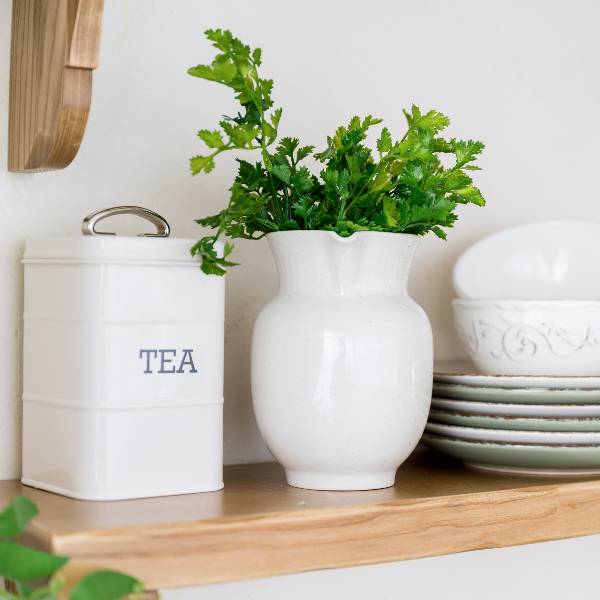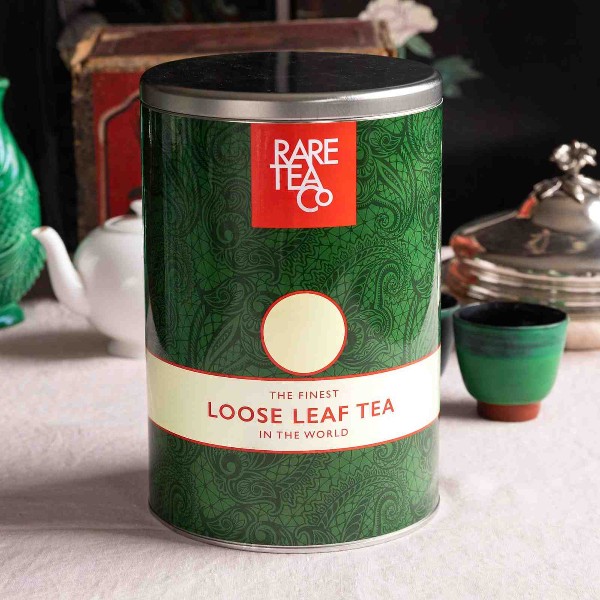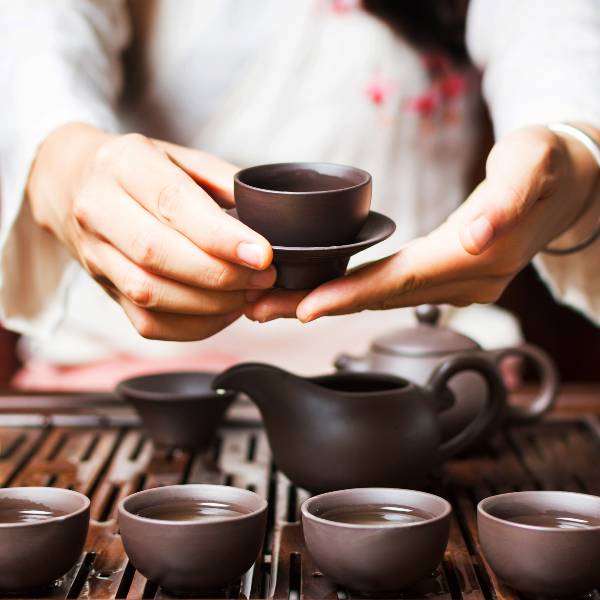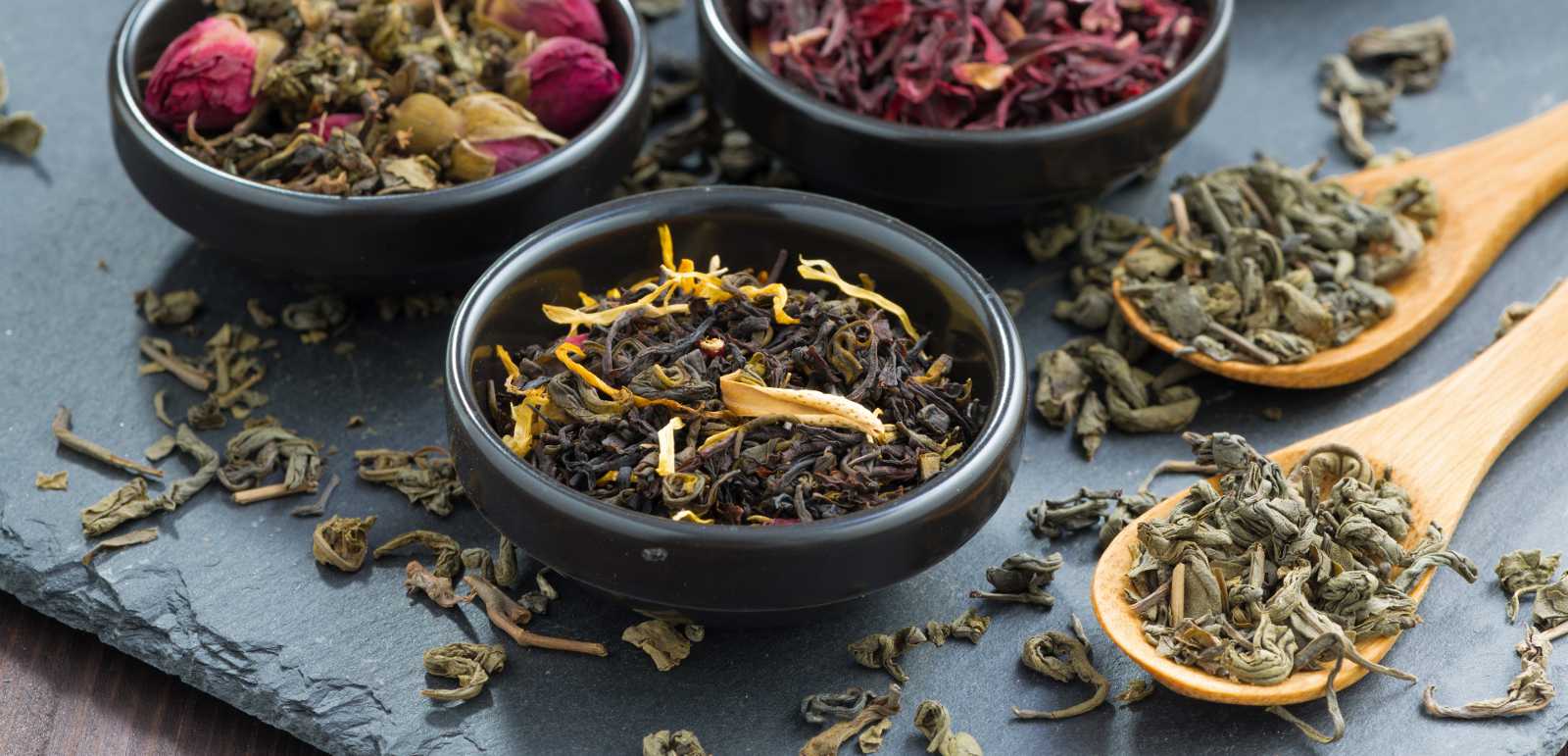If you’re true tea connoisseur, your love for tea goes beyond simply enjoying a hot cup. You appreciate the nuances of different flavors, the delicate aromas, and the soothing experience of each sip. Tea is not just a beverage; it is a respite, an exquisite indulgence.
To truly appreciate the magic of tea, proper storage is essential. The art of tea storage is not to be taken lightly. Like fine wine, it requires careful preservation to retain its delicate flavors and aromas. It can be a great addition to your emergency food storage stockpile.
In this guide, we will go beyond the basics and waft into the intricate aspects of tea storage. From the factors that compromise quality to the proper storage techniques, we leave no stone unturned to help keep your tea collection at its finest.
What Compromises Tea Quality
Before diving into the details of tea storage, it’s crucial to understand the factors that degrade tea quality. Generally, properly stored tea can last for a long time. However, these three culprits can rob tea of its delicate color, aroma, taste, and nutritional value over time.
- Light And UV Rays
Exposure to direct sunlight or intense artificial light can break down the delicate compounds in tea, causing it to lose flavor and aroma. The UV rays can cause oxidation and other chemical reactions that can spoil the flavor, too, and reduce its shelf life.
- Air
Tea leaves can absorb odors and other gases from the atmosphere. Overexposure to air can result in staleness and a loss of flavor.
- Moisture
Tea leaves are hygroscopic, which means they easily absorb moisture from the environment. High humidity can cause tea leaves to become moldy or lose their unique characteristics.
Gentle green tea, delicate white tea, and lightly oxidized oolong tea tend to degrade more quickly. These types are the most sensitive to light, air, and moisture. With proper storage conditions, they can retain their exquisite flavor, delightful aroma, and beneficial properties. While robust black teas are generally more resilient, they, too, benefit from careful storage.
What Makes A Good Container

To keep your tea away from the agents of staleness, it’s important to store it in a suitable container. So, what makes a good tea storage container?
- Airtight
A container with tight-fitting lids or airtight seals prevents air from entering and helps to keep out moisture and pests. It extends the tea’s shelf life, keeping it fresh and preventing potential spoilage.
- Opaque
The opacity of a container can control the amount of light and harmful UV rays that permeate the container. The more opaque the container, the less light can penetrate. Essentially, an opaque container can preserve the vibrant color of the tea and prevent premature degradation of its natural compounds that contribute to its unique flavor profile and health benefits.
- Nonreactive
Tea can absorb odors and flavors from its surroundings, making the choice of container important. Containers made from certain metals or plastics can impart unwanted flavors or react with the tea’s natural acids and oils, altering its flavor. So, to preserve your tea’s original taste and aroma, choose a nonreactive material like glass or tin for the container.
- Right size
Consider the size of the container to get based on the quantity of tea you plan to store. It should have enough room for the tea leaves to expand and breathe but not too much space that could lead to increased air exposure. Storing tea in smaller quantities is generally recommended to maintain its freshness.
- Right shape
The container’s shape can also impact the storage of tea. A container with a wide mouth makes it easier to scoop out tea leaves, especially for loose-leaf tea enthusiasts. On the other hand, a container with a smaller opening helps reduce air exposure each time the container is opened, further preserving the tea’s freshness.
What We Recommend
Considering that tea is organic and delicate, choosing the right type of container is like drawing a line between a delightful indulgence and a less-than-satisfactory experience.
Here are our recommendations for the types of containers you can use:
- Choose A Tin With A Proper Seal

Tin containers, often called tea tins, are famous for storing loose-leaf tea. They are generally airtight and opaque and come in various sizes and designs. They are also lightweight and portable and can protect tea from harmful elements.
Rare Tea Company recommends you store your loose leaf tea in a tea tin with a strong seal. This is because tea becomes bland and lackluster if left in a kitchen canister with a poor seal, as the air can get in.
- Find An Elegant Ceramic Canister
Elegant ceramic canisters with an airtight lid are an aesthetic addition to the shelf. Aside from being opaque and nonreactive, the ceramic material offers protection from external elements. The thick ceramic walls provide excellent insulation against temperature changes, while the material’s opacity preserves the freshness and flavor of light-sensitive tea leaves.
- Use Stainless Steel Containers
Boasting unparalleled durability, nonreactive properties, and airtightness, these containers are highly effective in preventing air, light, and moisture from compromising the quality of your tea. The reflective surface of stainless steel is another advantage, as it repels light that could alter the flavor and appearance of the tea leaves. Additionally, the use of stainless steel ensures that the tea retains its natural flavor.
- Consider Bamboo Tea Boxes
For an eco-friendly storage option, consider bamboo tea boxes or chests. These boxes usually have compartments or compartments with lids, allowing you to keep different tea varieties separate. Ensure the bamboo tea boxes have a good seal to maintain tea freshness.
Where To Store It
The storage location is just as important a consideration as the type of container. Here are some ideal places you can stash your tea away.
- Cool And Dry Pantry Or Cupboard
The pantry or a dedicated cupboard in your kitchen is often a suitable place to store tea. Make sure the area is cool and dry since excessive heat and moisture can negatively impact the flavor and shelf life of the tea. The optimal temperature range should ideally be between 40°F to 80°F (4°C to 27°C), with a humidity level below 60%.
- Away From Heat Sources
Avoid storing tea near heat sources, such as stoves, ovens, direct sunlight, and radiators. Heat can accelerate the deterioration of tea leaves and reduce their quality. Choose a storage spot unexposed to direct sunlight or appliances that produce heat.
- Dark And Odor-Free Environment
Place tea containers in a dark and odor-free environment to protect the tea from light and unwanted smells. While airtight containers can block out light, selecting a storage spot away from strong-smelling foods or spices will ensure your tea maintains its original aroma.
- Avoid Frequent Temperature Changes
Rapid temperature fluctuations can cause condensation inside the tea container, degrading the tea leaves. To prevent this, avoid placing tea containers near air vents, refrigerators, or windows where significant temperature changes can occur.
- Refrigeration (For Some Teas)
In specific cases, refrigeration can be beneficial for certain tea types, like green tea and herbal tea. However, ensure that the tea is placed in an airtight container to avoid moisture and odor from affecting it. Allow the tea to come to room temperature before opening the container to avoid condensation. Not all teas benefit from refrigeration, so check specific recommendations for each tea variety.
To sum it up, avoid storing tea in areas exposed to direct sunlight, near heat sources, and high humidity to let it remain fresh and flavorful for a longer time.
What Are Advanced Methods
If you’re looking to take it to the next level, here are some innovative methods to help preserve the quality and freshness of your precious tea collection.
- Nitrogen Flushing: Some tea connoisseurs use nitrogen flushing to remove oxygen from the container to prevent oxidation.
- Vacuum Sealing: If you have tea in bulk that won’t be consumed quickly, vacuum sealing can significantly extend its shelf life. It minimizes the tea’s exposure to oxygen, moisture, and other elements that can diminish its quality.
- Climate-Controlled Storage: As mentioned earlier, temperature and humidity can significantly affect the tea’s quality and longevity. That said, you may consider using climate-controlled storage to maintain optimal conditions. Specialized tea refrigerators or wine coolers with humidity control, for instance, can ensure your tea is stored in a steady and controlled atmosphere.
- Professional Tea Caddies: If you want to combine style with function, consider investing in professional tea caddies made from high-quality materials, like cherry bark or other fine woods. These caddies offer excellent protection from light and air, ensuring that your tea leaves are stored in an optimal environment.
- Traditional Clay Or Porcelain Jars: In China, tea is often stored in clay or porcelain jars buried underground to create an environment that mimics natural conditions in caves, with stable temperature and humidity levels. This method is often employed for aging teas, like Pu-erh, which develop richer flavors over time.
- Desiccants: To control moisture levels, consider using desiccants in your tea storage. These materials, such as silica gel packets, absorb moisture from the air. However, it’s essential to use them carefully to avoid over-drying the tea, which could impact its flavor.
- Hygrometers: For those who want precise control over humidity levels, using hygrometers in your storage area can help you keep track of conditions. This tool ensures that your tea is not exposed to excess humidity or dryness, which can impact its quality.
- Smart Containers: With modern technology, smart containers are now available for tea storage. These containers can monitor and adjust internal conditions, such as temperature and humidity. Some even have features that track the freshness of your tea over time, providing notifications when it’s time to enjoy your tea before its optimal flavor period ends.
How Long Can You Store Tea For
Different types of tea can have varying shelf lives depending on how they are stored under optimal conditions. Here is a general guideline to give you an idea:
- Green and white teas: These are more delicate and are best consumed within 6 months to a year, although they can last up to 2 years.
- Oolong tea: It has a moderate shelf life, often best within 2 years, but can last longer if properly stored.
- Black tea: Known for its longevity, it can retain its quality for 2 to 3 years, sometimes extending up to 5 years.
- Pu-erh tea: This is a fermented tea that actually improves with age and can be stored for many years, often decades, similar to fine wine.
The key to extending tea’s shelf life is minimizing oxidation and degradation of the leaves, which is why airtight containers and proper environment are crucial. Some teas, like Pu-erh, are exceptions as they are designed to age.
When To Let Go
While tea doesn’t exactly go bad in a harmful way, it can lose its quality over time, resulting in a less enjoyable tea-drinking experience. It’s important to be aware of the signs of this deterioration. The signs may vary across different types of tea, so it’s valuable to know what to look for in each variety.
- Loss Of Aroma
One of the first indicators that your tea has deteriorated is a lack of aroma. Fresh tea leaves emit a distinct and inviting scent, but as time goes on, this fragrance may become less pronounced. If you notice that your tea lacks its usual delightful aroma, it could be a sign that its quality has declined.
- Changes In Color
Another visible sign of tea deterioration is a change in color. For example, green teas that have aged or been exposed to excessive light may lose their vibrant green hue and turn dull or yellowish. Similarly, black teas might lose their rich and deep color, appearing more faded or brown. These color changes indicate that the tea may have lost some of its freshness and flavor.
- Stale Flavor
Perhaps the most noticeable sign of deteriorated tea is a stale flavor. It may taste flat, lifeless, or even slightly sour. The complexity and nuanced flavors you once enjoyed in your tea may be diminished. This could result from the tea leaves being past their prime or not being stored properly.
That said, regularly sample your stored tea to check for any changes in aroma, flavor, or texture. This will help you identify any signs of staleness or deterioration. As for restocking, purchase tea in small quantities to ensure you regularly consume fresh batches. This minimizes the risk of storing tea for too long.
How To Dispose Of Stale Tea Properly
When you realize that your tea has lost its flavor and no longer provides an enjoyable tea-drinking experience, it’s time to consider disposing of it. Proper disposal is environmentally good, especially composting. Composting old (and used) tea leaves can help enrich the soil with valuable nutrients as they naturally decompose.
To compost tea leaves, simply add them to a compost bin along with other organic matter, like fruit or vegetable scraps, coffee grounds, and yard waste. Over time, these materials will break down, creating nutrient-rich compost for plants and gardens.
Takeaways 
Tea is more than just a delightful drink option. When consumed wisely, it can be a nutritional powerhouse—a healthy addition to a holistic diet.
But to preserve its flavor, aroma, and overall quality, it must be stored correctly. By understanding the culprits of degradation and choosing the right storage container and location, you can ensure that your tea remains fresh and delicious for an extended period.
With these tips and guidelines, you are now equipped with the knowledge to store your tea collection like an expert and continue enjoying exploring different flavors and varieties as a true tea connoisseur.


